| View previous topic :: View next topic |
| Author |
Message |
Tedat


Joined: 08 Nov 2011
Posts: 800
Location: Berlin/Germany
|
 Posted: Fri Jan 16, 2015 8:21 am Post subject: Posted: Fri Jan 16, 2015 8:21 am Post subject: |
 |
|
Tedat wrote:
| hoanpham wrote: |
| wow. your PP skill is really good, as we have seen earlier in another thread. |
thank you, but in this case I didn't do much.. the details was always there.. just a bit hidden. Like I said before it was just a single click when using the "Perfectly Clear Plug-in" which is avaible for Photoshop and Lightroom. It's a very powerful auto correction tool with single click and the possibility for fine tune. With 115 Euro each or 149 Euro for the bundle I think it's not too expensive for those results.
But even without this plugin (see the second edited photo) it wasn't much work.. inbuild auto levels + auto color most time will give you a similar result and are also very easy to use.
_________________
Regards
Jan
flickr
Sony A7RM2
Contax T*: Distagon 4/18, Distagon 2/28, Distagon 1.4/35, PC-Distagon 2.8/35, Planar 1.4/50, Planar 1.4/85, Planar 2/100, Planar 2/135, S-Planar 2.8/60, Tessar 2.8/45, Mirotar 8/500, Vario Sonnar 3.4/35-70, Vario Sonnar 4.5-5.6/100-300
Carl Zeiss for Rollei QBM: F-Distagon 2.8/16 HFT, Distagon 2.8/25, Planar 1.4/50 HFT, Sonnar 2.8/85
Konica Hexanon AR: 2.8/21, 1.2/57
Other: Minolta F2.8 [T4.5] 135mm STF, Meopta Meostigmat 1.4/70, Tokina AT-X 2.5/90.. and lots of early M42 Yashinon, Rikenon and Mamiya lenses |
|
| Back to top |
|
 |
memetph

Joined: 01 Dec 2013
Posts: 942
Location: Poland
|
 Posted: Fri Jan 16, 2015 10:16 am Post subject: Posted: Fri Jan 16, 2015 10:16 am Post subject: |
 |
|
memetph wrote:
Thanks hoanpham, I have always thought that those settings were for Jpeg . |
|
| Back to top |
|
 |
uhoh7

Joined: 24 Nov 2010
Posts: 1300
Location: Idaho, USA
|
 Posted: Mon Jan 26, 2015 4:20 am Post subject: Posted: Mon Jan 26, 2015 4:20 am Post subject: |
 |
|
uhoh7 wrote:
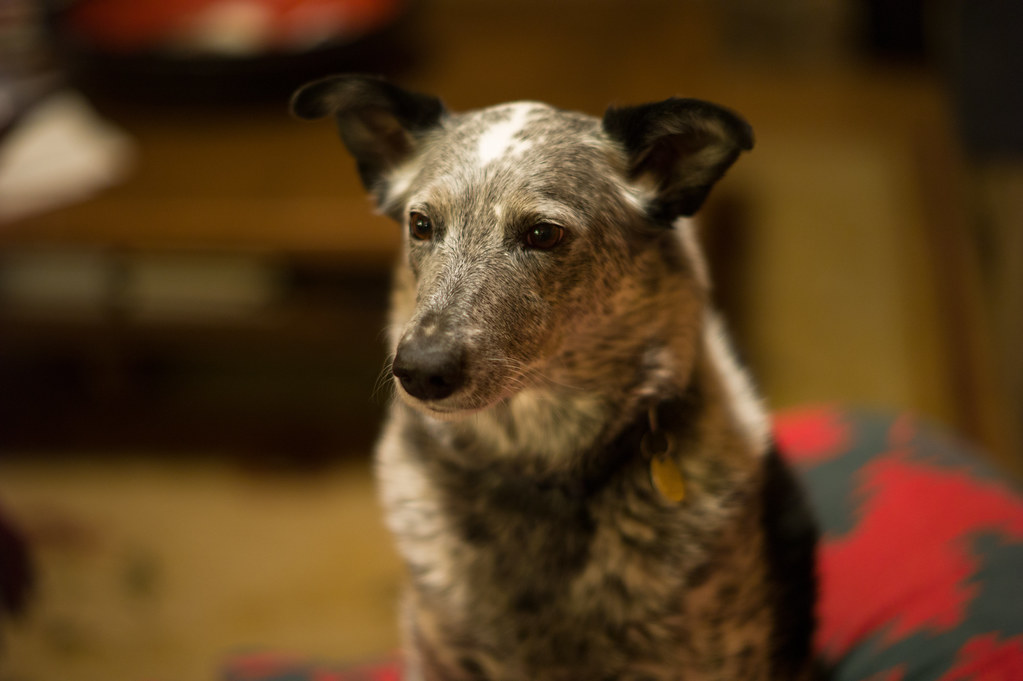
Shelley by unoh7, on Flickr
woof 
_________________
Making MFlenses safe for the letter *L*  |
|
| Back to top |
|
 |
uhoh7

Joined: 24 Nov 2010
Posts: 1300
Location: Idaho, USA
|
 Posted: Mon Feb 02, 2015 9:56 am Post subject: Posted: Mon Feb 02, 2015 9:56 am Post subject: |
 |
|
uhoh7 wrote:
@f/2ish
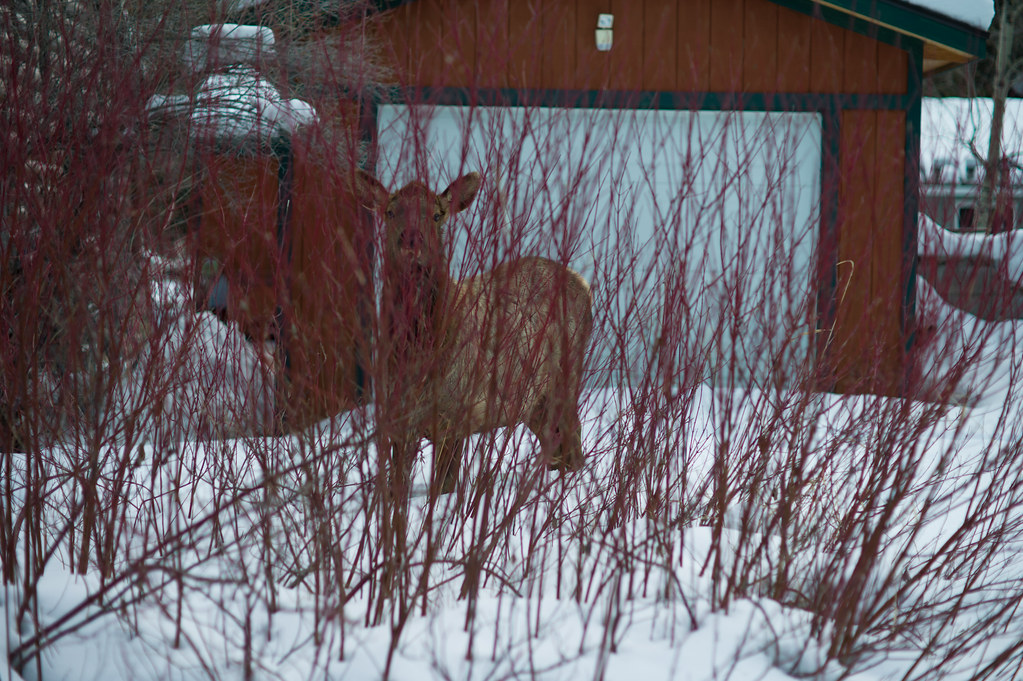 L1027088 by unoh7, on Flickr L1027088 by unoh7, on Flickr
crop:
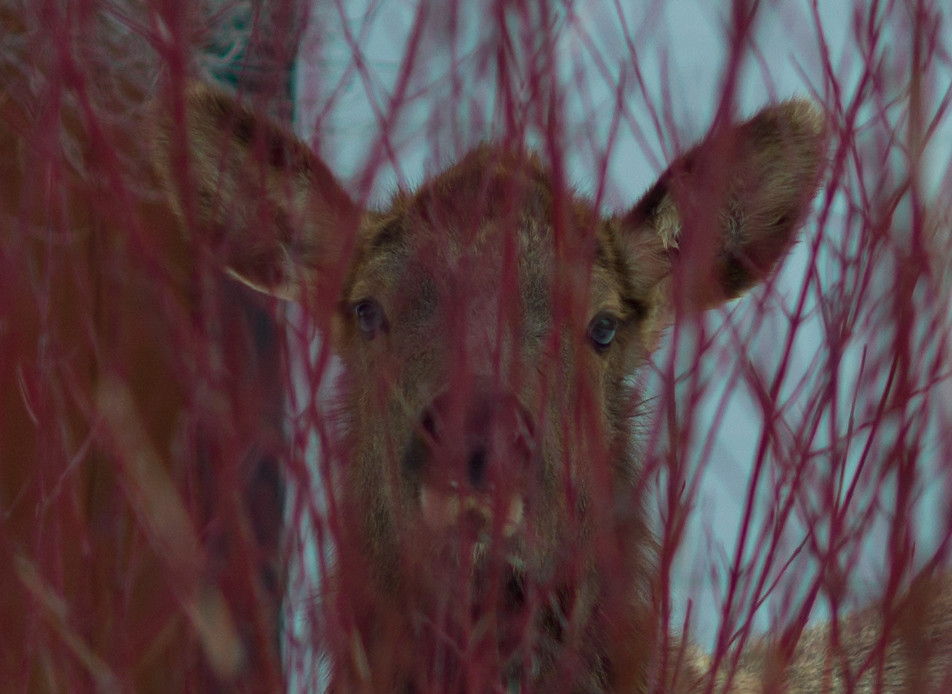
L1027088-2 by unoh7, on Flickr
f/2.8:

L1027087 by unoh7, on Flickr
_________________
Making MFlenses safe for the letter *L*  |
|
| Back to top |
|
 |
kds315*


Joined: 12 Mar 2008
Posts: 16541
Location: Weinheim, Germany
Expire: 2021-03-09
|
 Posted: Mon Feb 02, 2015 10:03 am Post subject: Posted: Mon Feb 02, 2015 10:03 am Post subject: |
 |
|
kds315* wrote:
Great, you must be happy with your 75mm!
_________________
Klaus - Admin
"S'il vient a point, me souviendra" [Thomas Bohier (1460-1523)]
http://www.macrolenses.de for macro and special lens info
http://www.pbase.com/kds315/uv_photos for UV Images and lens/filter info
https://www.flickr.com/photos/kds315/albums my albums using various lenses
http://photographyoftheinvisibleworld.blogspot.com/ my UV BLOG
http://www.travelmeetsfood.com/blog Food + Travel BLOG
https://galeriafotografia.com Architecture + Drone photography
Currently most FAV lens(es):
X80QF f3.2/80mm
Hypergon f11/26mm
ELCAN UV f5.6/52mm
Zeiss UV-Planar f4/60mm
Zeiss UV-Planar f2/62mm
Lomo Уфар-12 f2.5/41mm
Lomo Зуфар-2 f4.0/350mm
Lomo ZIKAR-1A f1.2/100mm
Nikon UV Nikkor f4.5/105mm
Zeiss UV-Sonnar f4.3/105mm
CERCO UV-VIS-NIR f1.8/45mm
CERCO UV-VIS-NIR f4.1/94mm
CERCO UV-VIS-NIR f2.8/100mm
Steinheil Quarzobjektiv f1.8/50mm
Pentax Quartz Takumar f3.5/85mm
Carl Zeiss Jena UV-Objektiv f4/60mm
NYE OPTICAL Lyman-Alpha II f1.1/90mm
NYE OPTICAL Lyman-Alpha I f2.8/200mm
COASTAL OPTICS f4/60mm UV-VIS-IR Apo
COASTAL OPTICS f4.5/105mm UV-Micro-Apo
Pentax Ultra-Achromatic Takumar f4.5/85mm
Pentax Ultra-Achromatic Takumar f5.6/300mm
Rodenstock UV-Rodagon f5.6/60mm + 105mm + 150mm
|
|
| Back to top |
|
 |
OPAL

Joined: 11 Dec 2012
Posts: 354
|
 Posted: Mon Feb 02, 2015 10:14 am Post subject: Posted: Mon Feb 02, 2015 10:14 am Post subject: |
 |
|
OPAL wrote:
I am not an plastic fan either, but for the smooth and easy working autofocus mechanism, plastic is the best lightweight material to work with. And plastic is not all of the same materials! The little motor drives of modern AF lenses, would have an hard time to move the optical glass and mechanical parts permanently back and forth.
Of course, it could be done with all longlasting metal, but probably not for the costs, most people expects for their wallets.
The "red pencil" is always an very important part on the development of new lenses!  |
|
| Back to top |
|
 |
uhoh7

Joined: 24 Nov 2010
Posts: 1300
Location: Idaho, USA
|
 Posted: Mon Feb 02, 2015 5:57 pm Post subject: Posted: Mon Feb 02, 2015 5:57 pm Post subject: |
 |
|
uhoh7 wrote:
| kds315* wrote: |
| Great, you must be happy with your 75mm! |
haha, in this case I paid a fortune and gained a fortune 
But what I have learned here is how lucky I've been in getting such a nice copy 
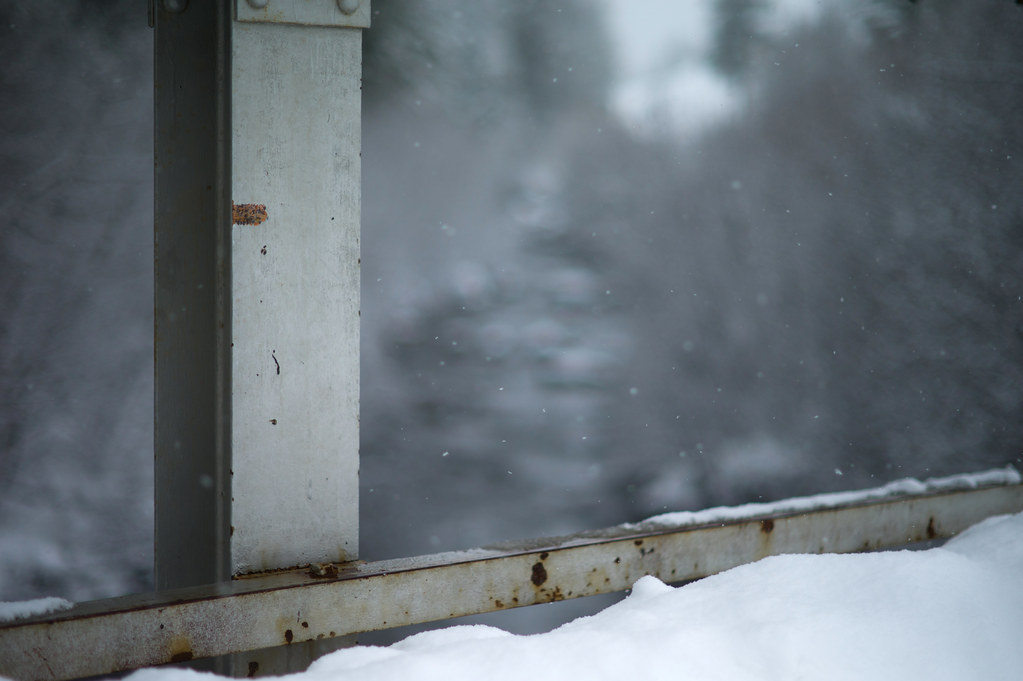
Bridge Strut by unoh7, on Flickr
_________________
Making MFlenses safe for the letter *L*  |
|
| Back to top |
|
 |
uhoh7

Joined: 24 Nov 2010
Posts: 1300
Location: Idaho, USA
|
 Posted: Fri Feb 06, 2015 6:29 am Post subject: Posted: Fri Feb 06, 2015 6:29 am Post subject: |
 |
|
uhoh7 wrote:
on A7.mod

DSC00860 by unoh7, on Flickr
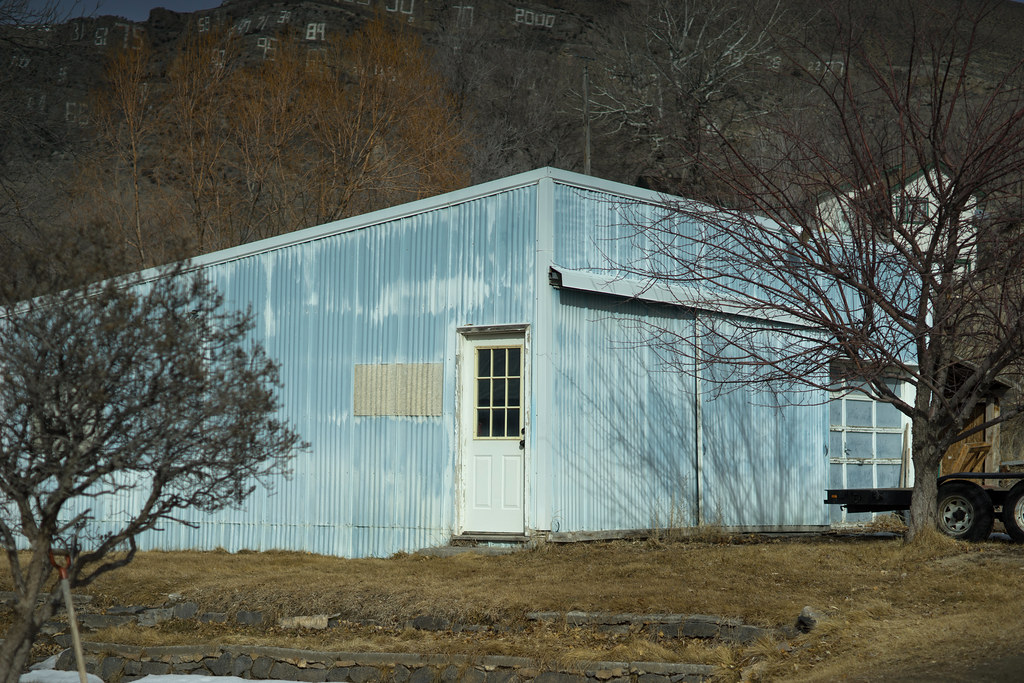
DSC00823 by unoh7, on Flickr

DSC00821 by unoh7, on Flickr

DSC00646 by unoh7, on Flickr
_________________
Making MFlenses safe for the letter *L*  |
|
| Back to top |
|
 |
Vitix68
Joined: 03 Mar 2015
Posts: 1
Location: France
|
 Posted: Tue Mar 03, 2015 1:19 pm Post subject: Posted: Tue Mar 03, 2015 1:19 pm Post subject: |
 |
|
Vitix68 wrote:
Thank you so much for keep posting images Uhoh.
This will help me to take a choice! |
|
| Back to top |
|
 |
uhoh7

Joined: 24 Nov 2010
Posts: 1300
Location: Idaho, USA
|
 Posted: Tue Mar 03, 2015 9:18 pm Post subject: Posted: Tue Mar 03, 2015 9:18 pm Post subject: |
 |
|
uhoh7 wrote:

Blue and Silver by unoh7, on Flickr

Chevrolet by unoh7, on Flickr

Window by unoh7, on Flickr
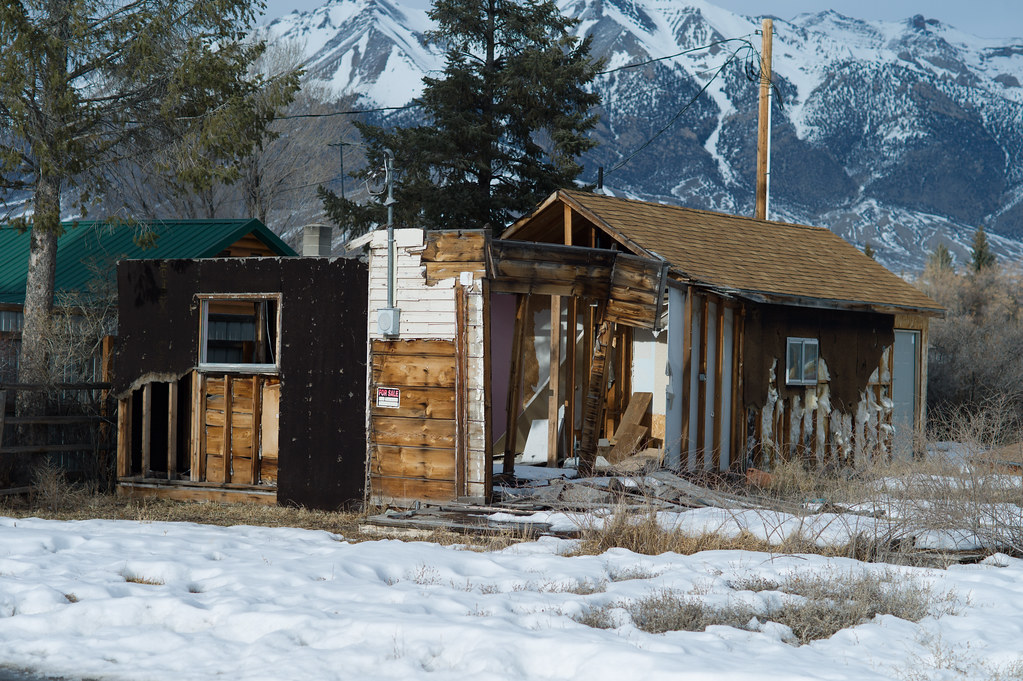
L1027926 by unoh7, on Flickr
another on A7.mod:
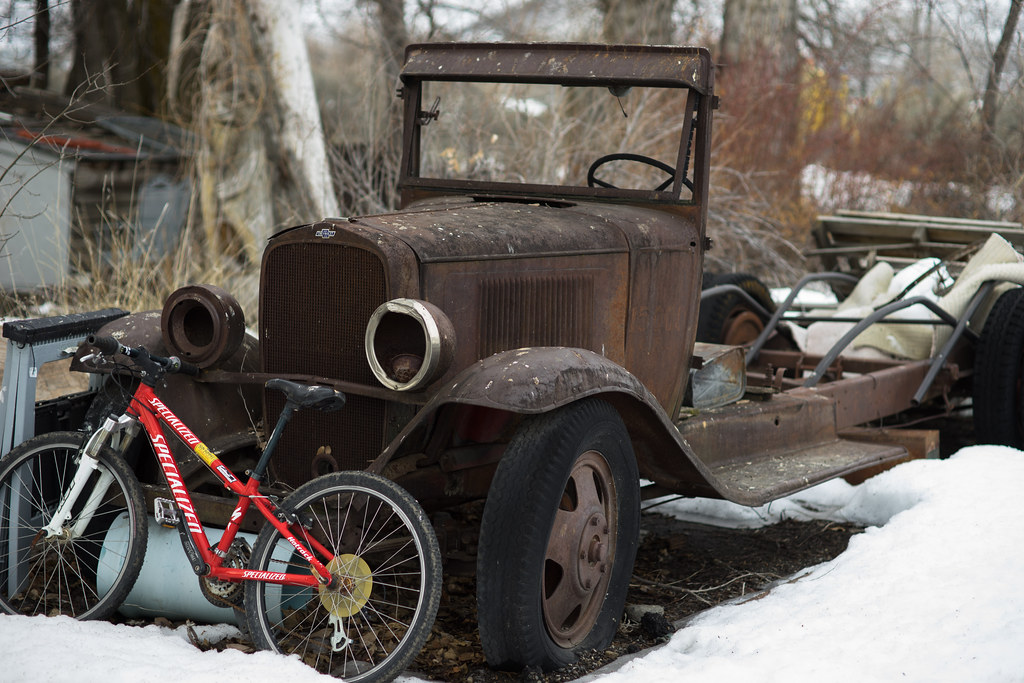
Old Ford by unoh7, on Flickr
_________________
Making MFlenses safe for the letter *L*  |
|
| Back to top |
|
 |
uhoh7

Joined: 24 Nov 2010
Posts: 1300
Location: Idaho, USA
|
 Posted: Fri Mar 27, 2015 3:14 am Post subject: Posted: Fri Mar 27, 2015 3:14 am Post subject: |
 |
|
uhoh7 wrote:

L1028354 by unoh7, on Flickr
my M9 was out for a new shutter, now back 
_________________
Making MFlenses safe for the letter *L*  |
|
| Back to top |
|
 |
scsambrook


Joined: 29 Mar 2009
Posts: 2167
Location: Glasgow Scotland
Expire: 2011-11-18
|
 Posted: Fri Mar 27, 2015 8:50 am Post subject: Posted: Fri Mar 27, 2015 8:50 am Post subject: |
 |
|
scsambrook wrote:
A new shutter? You wore it out already? 
_________________
Stephen
Equipment: Pentax DSLR for casual shooting, Lumix G1 and Fuji XE-1 for playing with old lenses, and Leica M8 because I still like the optical rangefinder system. |
|
| Back to top |
|
 |
uhoh7

Joined: 24 Nov 2010
Posts: 1300
Location: Idaho, USA
|
 Posted: Tue Mar 31, 2015 3:20 am Post subject: Posted: Tue Mar 31, 2015 3:20 am Post subject: |
 |
|
uhoh7 wrote:
| scsambrook wrote: |
A new shutter? You wore it out already?  |
My camera was used and I put over 100k on it. I'm just relieved to have it back after 6 weeks with the A7 EVF and Sony Raws. LOL

Sym_15_0-177 by psia.ni, A7
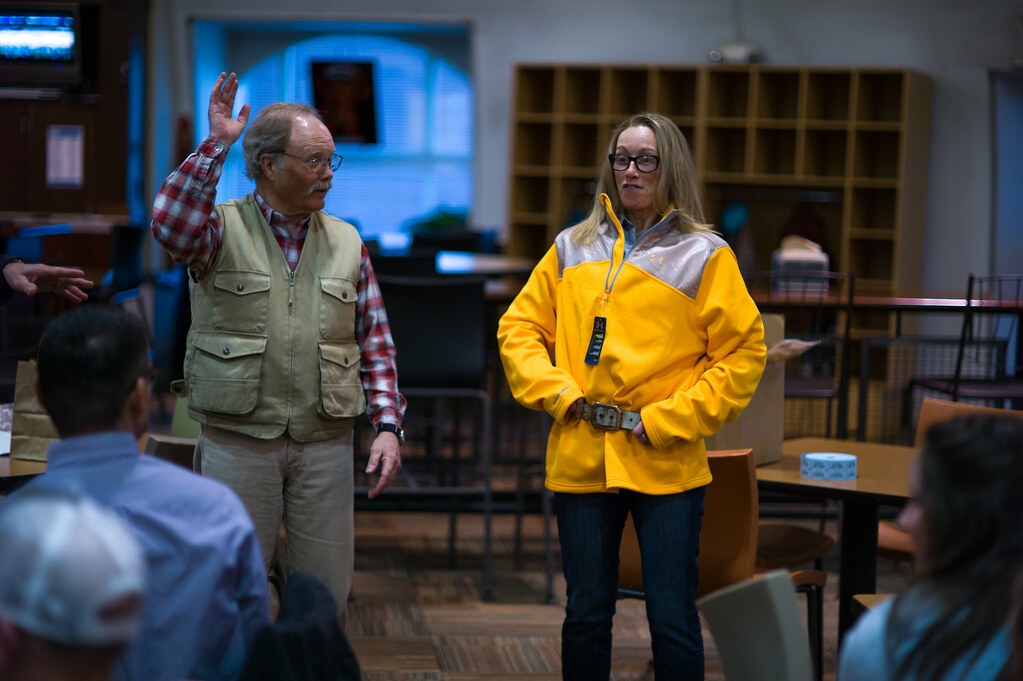
Sym_15_0-213 by psia.ni, M9
_________________
Making MFlenses safe for the letter *L*  |
|
| Back to top |
|
 |
finarphin
Joined: 22 Jan 2016
Posts: 15
Location: Sacramento
|
 Posted: Fri Jan 22, 2016 4:42 am Post subject: Optical Formula Posted: Fri Jan 22, 2016 4:42 am Post subject: Optical Formula |
 |
|
finarphin wrote:
This thread looks a little stagnant, but I was searching for information on short telephoto lenses and stumbled on it. So I joined up in order to post an observation.
I got a Leica 90mm Elmar, to go on my IIIf, and was very disappointed with it -- the images just don't look right to me. From there I thought I needed something really rich and famous, and at the same time at least quasi-affordable. I was trying to be cautious and thought I had done my homework and eventually settled on a Leica 90mm Summicron-R preaspherical. 1980. But I don't like its images either. I thought I couldn't go wrong: Leica, Summicron, Mandler, sharp, recent, mint, etc., etc., etc.
One reads about this or that characteristic of a lens as being important (to some people, at least), such as vignetting, how sharp it is wide open, what its maximum f stop is, how heavy it is, and all that la-de-da. None of that matters to me. I think the essential characteristic is the optical formula, and that is rarely touched upon as a significant particle of information. As I've since learned, for 90mm Summicrons with an m-mount, there were three of them, or at least three so far. They aren't tweaks of each other, they're different. What an image needs in order to look right is having been taken with a lens of double-gaussian formula. If we're talking about the particularities of the subject matter or the artist's intent, that's different. I just mean the look of the image. The Elmar and the 90mm Summicron preaspherical are triplets. If it's double-gaussian, I might buy it (if I can afford it). If it's a triplet, I might as well throw it away.
This Leica 75mm Summilux is a double-gaussian design, as pointed out, above. A pretty simple looking one: not too many elements. Mandler; Mr. Double-Gaussian. And although it's not apparent in every single shot, it has the best rendition of any lens I've ever seen. This picture, for instance:
Hair Studio by unoh7, on Flickr
L1026410
I think this is on page two of this thread. It's just amazing. |
|
| Back to top |
|
 |
scsambrook


Joined: 29 Mar 2009
Posts: 2167
Location: Glasgow Scotland
Expire: 2011-11-18
|
 Posted: Fri Jan 22, 2016 10:45 am Post subject: Re: Optical Formula Posted: Fri Jan 22, 2016 10:45 am Post subject: Re: Optical Formula |
 |
|
scsambrook wrote:
Hello finarphin! Welcome to MF Lenses and congratulations on an opening post with some nicely contentious content! If you have any triplets you want to throw away, I'm happy to pay for shipping them to me  But the first- or second-model 90mm rangefinder Summicrons (the big, heavy ones) are actually double gauss designs, not triplets. But the first- or second-model 90mm rangefinder Summicrons (the big, heavy ones) are actually double gauss designs, not triplets.
_________________
Stephen
Equipment: Pentax DSLR for casual shooting, Lumix G1 and Fuji XE-1 for playing with old lenses, and Leica M8 because I still like the optical rangefinder system. |
|
| Back to top |
|
 |
Gerald


Joined: 25 Mar 2014
Posts: 1196
Location: Brazil
|
 Posted: Fri Jan 22, 2016 1:22 pm Post subject: Re: Optical Formula Posted: Fri Jan 22, 2016 1:22 pm Post subject: Re: Optical Formula |
 |
|
Gerald wrote:
| finarphin wrote: |
| What an image needs in order to look right is having been taken with a lens of double-gaussian formula. |
There is nothing magical in the Double Gauss optical formula. You can have a good or a bad lens, both Double Gauss. All depends on the quality of the particular design. I estimate that over 90% of the modern lenses are NOT Double Gauss.
The merit of the Double Gauss scheme is that it is a symmetrical or almost symmetrical optical structure, what automatically cancels out most of coma, lateral CA and distortion.
_________________
If raindrops were perfect lenses, the rainbow did not exist. |
|
| Back to top |
|
 |
finarphin
Joined: 22 Jan 2016
Posts: 15
Location: Sacramento
|
 Posted: Sat Jan 23, 2016 4:19 am Post subject: Re: Optical Formula Posted: Sat Jan 23, 2016 4:19 am Post subject: Re: Optical Formula |
 |
|
finarphin wrote:
| scsambrook wrote: |
Hello finarphin! Welcome to MF Lenses and congratulations on an opening post with some nicely contentious content!
|
Thank you kindly.
| scsambrook wrote: |
If you have any triplets you want to throw away, I'm happy to pay for shipping them to me 
|
I'm going to give the 90mm Elmar to a friend of mine; also the camera it goes onto and the Industar 50 (copy of 50mm Elmar) which is also a triplet (he is blissfully unaware of the blessing he is eventually to receive). As for the 90mm Summicron, I think I've admitted to myself I'm going to have to go to the trouble of selling it -- and it looks so fabulous from the outside. And I got the camera body just for this lens, too.
| scsambrook wrote: |
| But the first- or second-model 90mm rangefinder Summicrons (the big, heavy ones) are actually double gauss designs, not triplets. |
Yes, everyone knows this about the Leica 90mm Summicron ltm/m 1957-1979 lens; or at any rate it's relatively easy to find this particle of information here and there. That's what decoyed me, along with my knowing that the 50mm Summicron was Leica, double-gaussian, and a lot of Mandler thrown in. What I wrote was, "As I've since learned, for 90mm Summicrons with an m-mount, there were three of them, or at least three so far. They aren't tweaks of each other, they're different." Maybe that's a little vague. But I've done more homework since then, if anyone's interested. The design of some of these others wasn't/isn't nearly so easy to ascertain.
90mm Summicron ltm/m 1957-1979 -- double-gaussian
90mm Summicron-M 1980-1998 ("preaspherical") -- triplet
90mm Summicron-M aspherical 1998-present -- double-gaussian
The 90mm Summicron-R 1970-2000 has the same or very similar design as the preaspherical Summicron-M, in other words, it's a TRIPLET!!!! This is the one I have. I don't like it (ie, quality of image), and on top of that I can't focus it unless I put it on a Sony a7ii. The 90mm Summicron-R aspherical 2002-2009 is double-gaussian. It has been pointed out to me that the 90mm Summicron-R lenses (and later m mount ones) are "tele" lenses, even though the official nomenclature doesn't reflect that. It seems that Leica, when they made the first 90mm Summicron-R, didn't adapt the double-gaussian lineage represented by the earlier m mount version, but went with something that is also characteristic of the 180mm Elmarit-R and 135mm Elmarit-R (triplets...or damn triplets, if you please). Telephotos.
All the 90mm Elmars are triplets. The 90mm Elmarits for m mount (1959-1974 and 1990-2008) are triplets. But the 90mm Elmarit-R is double-gaussian. Then there are the Tele-Elmarits; I forget what those are. The nomenclature is devious and confusing, and is basically tied to the maximum f stop, not the optical design.
So I'm back to the glorious 75mm Summilux, the very topic of this thread. I've found there is another (a sister?): the 80mm Summilux-R. I'm going to pay very careful attention to the internals of any lens I buy in the future -- beforehand. If I inherit money, I will go with one or another of these Summiluxes. Mandler's favorite lens? I wonder what that means. This 75mm version, I say again, has the best rendition of any lens I've ever seen. |
|
| Back to top |
|
 |
calvin83


Joined: 12 Apr 2009
Posts: 7553
Location: Hong Kong
|
 Posted: Sat Jan 23, 2016 5:23 am Post subject: Posted: Sat Jan 23, 2016 5:23 am Post subject: |
 |
|
calvin83 wrote:
The 90mm f/2 Summicron-M III is a 5e/4g Sonnar type lens. Only those lens made of exactly three elements can be considered as a triplet(tri- means three).
_________________
https://lensfever.com/
https://www.instagram.com/_lens_fever/
The best lens is the one you have with you. |
|
| Back to top |
|
 |
uhoh7

Joined: 24 Nov 2010
Posts: 1300
Location: Idaho, USA
|
 Posted: Sat Jan 23, 2016 6:21 am Post subject: Re: Optical Formula Posted: Sat Jan 23, 2016 6:21 am Post subject: Re: Optical Formula |
 |
|
uhoh7 wrote:
| finarphin wrote: |
This Leica 75mm Summilux is a double-gaussian design, as pointed out, above. A pretty simple looking one: not too many elements. Mandler; Mr. Double-Gaussian. And although it's not apparent in every single shot, it has the best rendition of any lens I've ever seen. This picture, for instance:
Hair Studio by unoh7, on Flickr
L1026410
I think this is on page two of this thread. It's just amazing. |
Mandler was a big authority on the D-Gauss, as you imply. It's the subject of his most famous paper, still highly regarded today. Of course there are many, many flavors of the design and great variation. Voigtlander made a great early D-Gauss, followed by the 50 summilux v1, which was a tour de force in it's day. The modern CV 50/1.5 is very like that lens but a little better. Mandler's most influential design was the v4 50/2 which maybe stands up better than any lens of the early 80s era technically. Tiny and fantastic, both close WO, and at infinity stopped down a bit. Close up at f/2 it actually bests the incredible 50 Lux ASPH, but the newer lens beats it of course just about everywhere else.
This lens is entirely different, but supposedly his favorite. It can be glowy WO, but already at 1.8 this goes away, and the lens is critically sharp at F/2. What really sets it apart is the Bokeh. For out of focus render in a gamut of situations the lens is really nice. It's replacement is technically superior, the 75/2, but not so well loved, and it's price has dropped while the 75 Lux stays high.
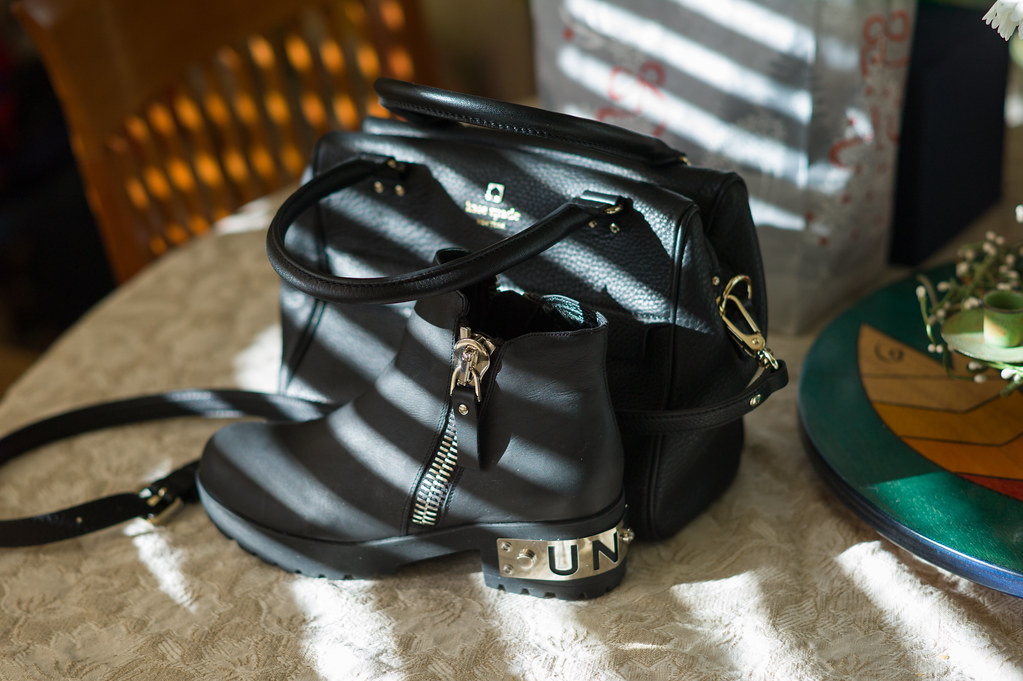
Gifts by unoh7, on Flickr

Ralphie Stares by unoh7, on Flickr

Breakfast by unoh7, These on M9 showing great RF calibration, which is not a given with many copies.
What do they say in italian: Formidabile 
Many feel it's the best portrait lens from Leica. But very versatile, a workhorse. For portraits in this vein at a cheaper price, there is the really nice CV 75/1.8. And of course there are a ton of great older 85s for portraits in RF, e.g. Nikkor 85/2 and all the Canon LTMs are very nice and very sharp once you stop down.
_________________
Making MFlenses safe for the letter *L*  |
|
| Back to top |
|
 |
finarphin
Joined: 22 Jan 2016
Posts: 15
Location: Sacramento
|
 Posted: Sat Jan 23, 2016 6:59 am Post subject: Posted: Sat Jan 23, 2016 6:59 am Post subject: |
 |
|
finarphin wrote:
| calvin83 wrote: |
| The 90mm f/2 Summicron-M III is a 5e/4g Sonnar type lens. Only those lens made of exactly three elements can be considered as a triplet(tri- means three). |
Thank you for the Greek translation...well I guess it could be Russian, too. I was wondering if anyone would object to some of these Summicrons being classified as triplets. You prefer the term Sonnar; that's clear. You're a splitter: I'm a lumper. Perhaps non-double-gaussian would be better?
I'm looking at the Leica Manual, The Complete Book of 35mm Photography, by Douglas O. Morgan, David Vestal, and William L. Broecker. 15th ed., Morgan and Morgan, Hastings-on-Hudson, N.Y., 1973. On p.518 the authors state that the 90mm f/2 Summicron-R is a "modified triplet." They go on to show a diagram of the cross-section of the lens on p. 520 (Fig. 31). I can compare that to a diagram of the cross section of a 90mm Summicron-M, given by Puts (Leica M-Lenses, Their soul and secrets), and while they are not identical, they are very similar. Some, perhaps the overbold, would consider them to be "the same" optical design. So I am going to consider that lens also as a "modified triplet." Triplet for short. Lumping.
Then again these same authors (Morgan, Vestal, and Broecker) consider the 50mm f3.5 Elmar to be a "modified triplet" -- that's pretty tripletish, even if it does have four pieces of glass. |
|
| Back to top |
|
 |
calvin83


Joined: 12 Apr 2009
Posts: 7553
Location: Hong Kong
|
 Posted: Sat Jan 23, 2016 7:32 am Post subject: Posted: Sat Jan 23, 2016 7:32 am Post subject: |
 |
|
calvin83 wrote:
Yes. Different people may use different terms on describing the same thing. I prefer use more specific terms when taking about technical things.
Here is the link to the part of Ernostar/Sonnar in the book A History of the Photographic Lens written by Rudolf Kingslake .
https://books.google.com/books?id=OJrJrEJ-r9QC&lpg=PA111&ots=Y_4kaNv65E&dq=A%20History%20of%20the%20Photographic%20Lens%20Sonnar&pg=PA110#v=onepage&q&f=false
_________________
https://lensfever.com/
https://www.instagram.com/_lens_fever/
The best lens is the one you have with you. |
|
| Back to top |
|
 |
finarphin
Joined: 22 Jan 2016
Posts: 15
Location: Sacramento
|
 Posted: Sat Jan 30, 2016 4:17 am Post subject: Re: Optical Formula Posted: Sat Jan 30, 2016 4:17 am Post subject: Re: Optical Formula |
 |
|
finarphin wrote:
Thanks very much for this link. If I ever retire I might get a copy and be edified.
| uhoh7 wrote: |
....Many feel it's the best portrait lens from Leica. But very versatile, a workhorse. For portraits in this vein at a cheaper price, there is the really nice CV 75/1.8. And of course there are a ton of great older 85s for portraits in RF, e.g. Nikkor 85/2 and all the Canon LTMs are very nice and very sharp once you stop down. |
Thank you for taking the time to reply to me, and for offering some suggestions for other lenses. I have a CV 75/2.5 -- I haven't used it enough to form a strong opinion about it: it's pretty on the outside, I guess that means something. I had an older Canon 85/2 which I didn't like. I couldn't focus it, and I just didn't like the quality of the image -- whatever that means; I'm not sure I even know what that means. It was heavy and long, and it probably had a lot of moment to it, and so maybe it was contributing to camera motion. But I'm getting a Minolta 45/2 to put on my Lumix DMC-G5, where it will be at least somewhat equivalent to a 90mm lens; it's double-gaussian so I have confidence in it. It's also short and fits in with the somewhat miniature ethos of the camera; kind of like what Leica was originally way back when. And it's black, too, so it goes with the camera. Vanity, vanity, vanity: I think upon it, I think I smell it.
I'm toying with the idea of trading in my 90mm Summicron for an 80mm Summilux-R, a ploy which is not completely out of the realm of possibility. Of course I'd have to come up with another $1,000, and I'm not yet convinced it's "the same" as the 75mm Summilux-M, though. |
|
| Back to top |
|
 |
uhoh7

Joined: 24 Nov 2010
Posts: 1300
Location: Idaho, USA
|
 Posted: Sun Jan 31, 2016 12:46 am Post subject: Re: Optical Formula Posted: Sun Jan 31, 2016 12:46 am Post subject: Re: Optical Formula |
 |
|
uhoh7 wrote:
| finarphin wrote: |
Thank you for taking the time to reply to me, and for offering some suggestions for other lenses. I have a CV 75/2.5 -- I haven't used it enough to form a strong opinion about it: it's pretty on the outside, I guess that means something. I had an older Canon 85/2 which I didn't like. I couldn't focus it, and I just didn't like the quality of the image -- whatever that means; I'm not sure I even know what that means. It was heavy and long, and it probably had a lot of moment to it, and so maybe it was contributing to camera motion. But I'm getting a Minolta 45/2 to put on my Lumix DMC-G5, where it will be at least somewhat equivalent to a 90mm lens; it's double-gaussian so I have confidence in it. It's also short and fits in with the somewhat miniature ethos of the camera; kind of like what Leica was originally way back when. And it's black, too, so it goes with the camera. Vanity, vanity, vanity: I think upon it, I think I smell it.
I'm toying with the idea of trading in my 90mm Summicron for an 80mm Summilux-R, a ploy which is not completely out of the realm of possibility. Of course I'd have to come up with another $1,000, and I'm not yet convinced it's "the same" as the 75mm Summilux-M, though. |
The CV 75/2.5 is nice and sharp, but very clinical and modern. The CV 75/1.8 is meant to be much more like the 75 Lux. The 80 Lux is near identical to the 75/1.4 and supposed to be a tad better. But it's going to be heavier and use a long adapter. Anyway, that CV is only around 600 used, and 1.8 is were you shoot the Lux alot anyway. 1.4 is very tricky and the DOF is sliver thin. The CV is also much lighter.
Not sure if your Canon 85 is a LTM or Fd type mount. The old RF 85s are really something, but copies vary quite a bit. 
_________________
Making MFlenses safe for the letter *L*  |
|
| Back to top |
|
 |
uhoh7

Joined: 24 Nov 2010
Posts: 1300
Location: Idaho, USA
|
 Posted: Tue Feb 02, 2016 2:31 am Post subject: Posted: Tue Feb 02, 2016 2:31 am Post subject: |
 |
|
uhoh7 wrote:
I had the 75 Lux out today with ND 3stop for the M9:
 L1043752 by unoh7, WO L1043752 by unoh7, WO

Walkin Down by unoh7, on Flickr

Crane Over River by unoh7, @ f/1.4 
_________________
Making MFlenses safe for the letter *L*  |
|
| Back to top |
|
 |
vroger


Joined: 23 Jul 2014
Posts: 623
Location: MN
Expire: 2016-10-21
|
 Posted: Wed Feb 03, 2016 6:37 pm Post subject: Posted: Wed Feb 03, 2016 6:37 pm Post subject: |
 |
|
vroger wrote:
Wonderful look. Hard for me to justify the spend unless someone gave me a ton of money and I paid bills first.. 
_________________
Roger Lund
Canon EOS-M, Fuji X-E2, Helois 44-0 Vintage, Helois 44-4, Canon FD 50mm 1.8, Jupiter 8 50mm F2, Jupiter 3 50mm F1.5, Canon Serenar 50mm 1.9, Canon 50mm 1.8 LTM, Canon Serenar 85mm F2, Leica 50mm f2 summar, E.Ludwig 50mm F2.9, Rekagon will.wetzlar 50mm 2.8,, a.schacht ulm travenar 135mm F3.5, CZJ 29mm 2.8 Hoya 28mm 2.8, CZ Tessar 50mm 2.8, MIR 37mm. 2.8, Porst Color Reflex MC 50mm 1.7, Vivitar 28mm 2.8 mc cf
http://photography.rogerlund.net
For sale: Canon EOS-M and MF Adapters. |
|
| Back to top |
|
 |
|
|
